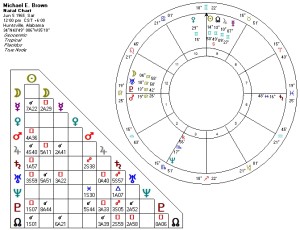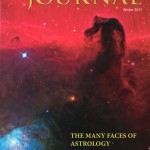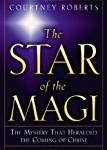How I Killed Pluto and Why It Had It Coming is the charming memoir of astronomer Mike Brown’s life and career as a Kuiper belt object hunter. Engaging and funny, he explains scientific concepts in a straightforward and understandable way. Brown’s astronomical discoveries parallel his marriage and the birth of his daughter in a nice mix of personal and professional anecdotes. His “killing” of Pluto resulted from the discovery of the dwarf planet Eris. The controversy over who discovered dwarf planet Haumea could only have happened on Mercury retrograde!
Michael E. Brown was born on June 5, 1965 in Huntsville, Alabama, according to Wikipedia. Most of his horoscope is made up of a major T-square with the Sun, Mercury and Jupiter in Gemini at the apex, variously squaring the Moon, Mars, Uranus and Pluto in Virgo, and Saturn in Pisces. Quite a mutable mix. His writing has a light touch, and he’s definitely open enough to consider the possibility of astrology. Brown’s only trine is between Neptune in Scorpio and Saturn, perhaps leading him to state that, “I don’t have anything other than this deep feeling that another planet past Pluto makes sense. And I’m willing to bet there’s one there.” His intuition was right. 
Since Brown’s career is so tied-up with Pluto, it’s fascinating to see that this planet is closely square his Sun and opposite Saturn! No wonder he jokes that he “killed Pluto.” He also calls it the “tiny lonely oddball at the edge of the solar system” and “everyone’s favorite runt planet.” His thoughts are in keeping with the pattern in his own horoscope.
If you’re interested in the discovery of Eris and other Trans-Neptunian Objects, this is an informative and entertaining read.
Buy on Amazon.com: How I Killed Pluto and Why It Had It Coming




